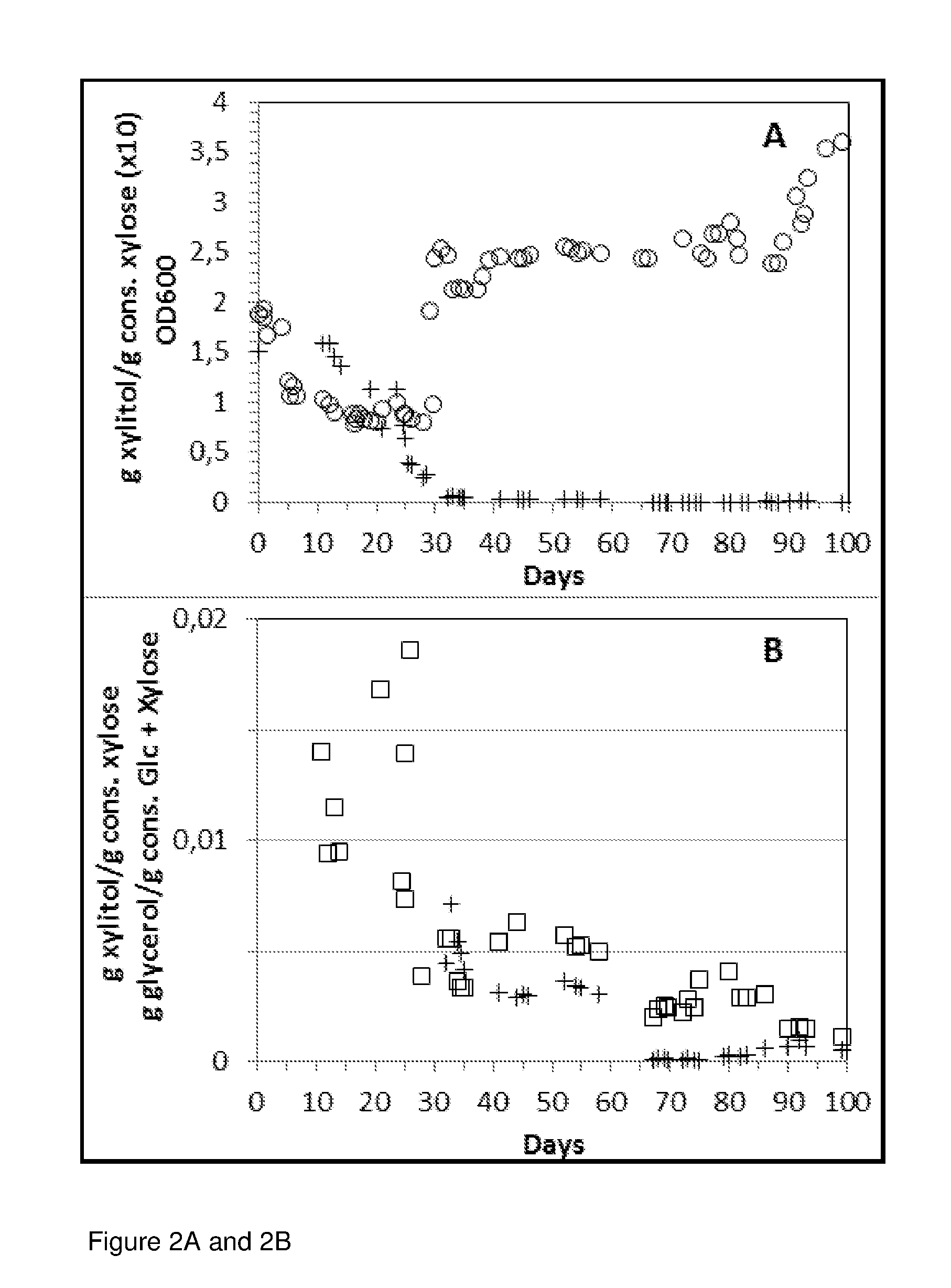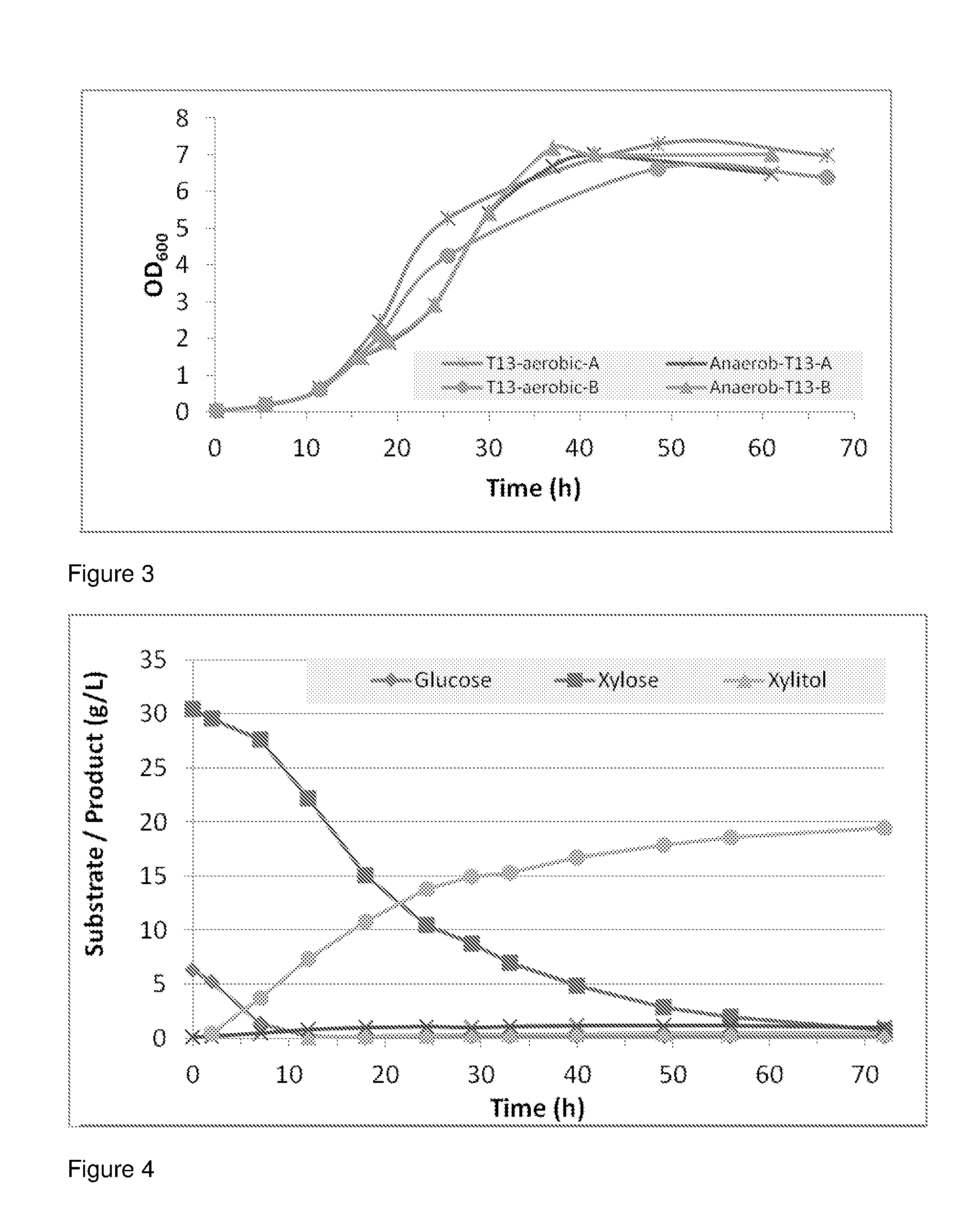Saccharomyces cerevisiae strains
- Summary
- Abstract
- Description
- Claims
- Application Information
AI Technical Summary
Benefits of technology
Problems solved by technology
Method used
Image
Examples
experiment 1
[0103]Method description for constructing a strain according to present invention. Strain sporulation of USM21 (CBS102678) and mating with evolved haploid xylose fermenting strain originating from CBS102679 and CBS128139. Day 1: Yeast strain USM21 (CBS102678) was streaked onto an YPD agar plate and incubated at 30° C. for 3 days. Another yeast strain with introduced DNA so as to cause the yeast (Saccharomyces cerevisiae) to obtain a second set of the genes encoding xylose reductase and xylitol dehydrogenase obtained from Scheffersomyces stipitis and xylulokinase obtained from S. cerevisiae and evolved for xylose fermentation is haploid (hereafter referred to as strain evolved) was streaked on to 20 g / L xylose agar plate and plates incubated at 30° C. for 4 days.
[0104]Day 5: USM21 cells was transferred onto a 2% KAc agar plate, and left at 30° C. 4 days, and room-temperature for 3 days. The strain had by then sporulated and individual spores were digested from each other by treatment...
experiment 2
[0109]Hydrolysates (pH): Hydrolysates (pH): wheat straw hydrolysate pH 5.0; Bagasse hydrolysate pH 5.0; birch hydrolysate pH 6.0; corn stover hydrolysate pH 5.0, hard wood hydrolysate pH 5.5; corn stover pH 5.5 fed-batch; SSF 10% WIS wheat straw pH5; SSF 10% WIS corn cobs pH5. Starch media (pH): Corn mash pH 5.0.
[0110]All hydrolysates were fermented anaerobically in FIGS. 4-23 without any substance additions besides a few drops of concentrated base / acid for setting the pH before adding the yeast. In FIGS. 17-23, 1 g / L each of Urea, KH2PO4, and corn steep liquor have been added to the corn stover.
Description of Making Agar Plates, Exemplified with a 2% Xylose Agar Plate (0.5 L):
[0111]Two separate flasks were autoclaved, 0.25 L with 15 g xylose and 0.25 L with 2.5 g (NH4)2SO4, 1.5 g KH2PO4, 0.25 g MgSO4, 0.85 g Yeast nitrogen base and 10 g Agar. A stirrbar was included into one of the flask. After autoclavation, the flasks were set to cool at room-temperature for 10 min, the solutions...
PUM
| Property | Measurement | Unit |
|---|---|---|
| Temperature | aaaaa | aaaaa |
| Temperature | aaaaa | aaaaa |
| Fraction | aaaaa | aaaaa |
Abstract
Description
Claims
Application Information
 Login to View More
Login to View More - R&D
- Intellectual Property
- Life Sciences
- Materials
- Tech Scout
- Unparalleled Data Quality
- Higher Quality Content
- 60% Fewer Hallucinations
Browse by: Latest US Patents, China's latest patents, Technical Efficacy Thesaurus, Application Domain, Technology Topic, Popular Technical Reports.
© 2025 PatSnap. All rights reserved.Legal|Privacy policy|Modern Slavery Act Transparency Statement|Sitemap|About US| Contact US: help@patsnap.com



